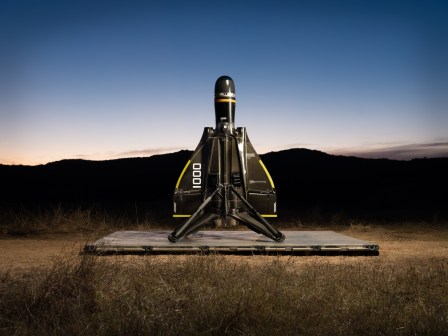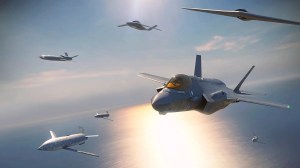Gen. Minihan envisions major expansion of Air Force’s Rapid Dragon capability

NATIONAL HARBOR, Md. — The leader of Air Mobility Command sees opportunities for greatly increasing the types of “palletized effects” that could be delivered by cargo planes.
Last year, Air Force Special Operations Command tested the Rapid Dragon system for delivering long-range strike weapons by dropping pallets of munitions out of cargo planes, when an MC-130 fired a Joint Air-to-Surface Standoff Missile (JASSM) during an Atreus exercise in Norway.
The capability was tested again during the Mobility Guardian exercise this summer in the Indo-Pacific.
Gen. Mike Minihan, commander of Air Mobility Command, called these types of tools a game changer.
“That absolutely serviced a target and was extremely, extremely successful,” he told reporters Monday at AFA’s Air, Space and Cyber conference.
However, “that’s just one aspect of palletized effects. So imagine, you know, not only can we service a target [with a lethal weapon], but we could deploy a decoy, we could put out a jamming sensor, we could put out a sensor that could find a radio and provide search and rescue. You know, all those things I think are on the table. When I talk about Rapid Dragon and when I talk about palletized effects, it’s much broader than just the kinetic side of the business,” he added.
The term “kinetic,” in U.S. military parlance, typically refers to deploying lethal weapons that directly engage a target.
Minihan was asked about his previously stated vision to deploy large numbers of unmanned aerial vehicles from the back of modified cargo aircraft.
“Still driving towards that, you know, and I think we will be successful,” he said. “Imagine where … you drop 100 UAVs. So, you know, little drones. A drone could come out and it could provide precision navigation and timing to someone that doesn’t have it. It could fly a life vest down to a downed pilot or a radio to a downed pilot. It could actually fly down and survey the runway which you’re about to land on … It could provide some sort of, you know, search mechanism for an enemy force if you want it. Or it could simply fly down and go to sleep and be there available for when you want to wake it up,” he told reporters.
Those types of small drones could also serve as decoys, spoof enemy systems, or collect intelligence information such as electronic intelligence, he said.
These types of operational concepts could be demonstrated before Minihan’s time as AMC chief wraps up at the end of June 2024, he suggested. However, he acknowledged that getting to a program of record could be “a little more challenging.”
To a certain extent the U.S. military already has these abilities, but “we just need to make sure that, you know, we can execute that safely and then get some operational reps underneath our belt, and then move forward quickly,” he added.
Major modifications to aircraft shouldn’t be necessary to deliver so-called palletized effects, he said, meaning it shouldn’t be expensive.
“I shouldn’t have a whole lot of concern about what comes off the pallet once it goes out of the airplane, I just need to make sure my crews are trained to get it out of the airplane safely and precisely for the operational maneuver being done, and then move forward,” he added.






